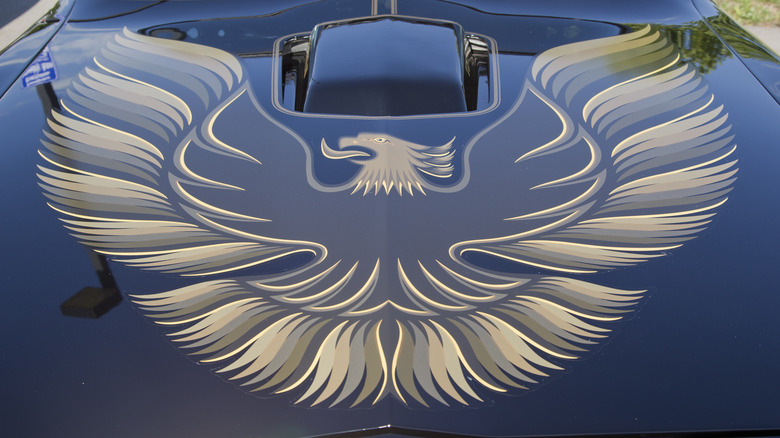The Pontiac 301 Turbo engine was available in the 1980 and 1981 Pontiac Firebirds. While most were installed in the Trans Am, some can be found in the Firebird Formula. The 301 Turbo engine story is best understood against the background of emissions controls, GM’s loss of market share as it struggled against the rising tide of imported cars entering the country, and the final attempt of GM’s divisions to preserve their unique identities during these turbulent times.
The 1970 Clean Air Act and the formation of the EPA affected the products of the Detroit automakers during that decade. Tightening emissions regulations were strangling the high-performance car segment. Higher fuel prices were one more nail in the coffin of high-horsepower, low fuel-economy engines. Pontiac lost its big-block engines after the 1979 model year and needed something powerful to fill the gap.
Pontiac engineers wanted a small-block engine unique to Pontiac and suited to the performance image of the top-level Firebirds. All they had was an economy-oriented 301 V8. Inspired by Buick’s recently released V6 Turbo, Pontiac proceeded to strengthen and then turbocharge the 301 V8.
The Pontiac 301 Turbo engine featured a thicker block, four-barrel carburetor, strengthened internal parts, hotter camshaft, and a reduced 7.6:1 compression ratio (subsequently lowered to 7.5:1 in 1981) to allow for the added pressure of turbocharging. The turbocharger used was an oil-cooled Garrett AIResearch TBO-305 with nine pounds of boost. The 301 Turbo was rated at 210 horsepower.
[ImagebyMlabrecquevia[ImagebyMlabrecqueviaWikimedia Commons | Cropped and scaled | CC BY-SA 3.0]Was Pontiac’s 301 Turbo Engine unreliable?

Keith Bell/Shutterstock
One potential source of poor reliability for the Pontiac 301 Turbo (identified as “Turbo 4.9” in its metric equivalent) engine was common to other early turbocharged engines. This was a problem known as “turbo coking,” which could afflict turbochargers that were cooled only by an oil passage (this was before the advent of water-cooled turbos). If these oil-cooled turbos were not cooled down by extended idling before shutting the engine off, the extreme heat built up inside the turbo could cause the oil to “coke” and create deposits in the turbo bearings. These deposits could restrict the flow of cooling oil and destroy the turbo.
To make things worse, the 301 Turbo engine had its turbocharger located on top of the engine, right next to the old-school carburetor, where its intense heat could cause detonation. This was a common problem, especially when running on the low-octane regular unleaded gas that GM had mandated in all its vehicles.
Other issues affecting the 301 Turbo engine included “turbo lag,” which reduced low-end torque because there was no “boost” until the turbo spooled up. On top of this, the electronic spark control was set to reduce the timing at the first hint of detonation, which cut performance even more. Later in the 1980s, the combination of sophisticated computer controls, intercoolers, water-cooled turbos, and fuel injection would make turbocharging a mainstream automotive technology.
Did people dislike the Pontiac’s 301 Turbo Engine’s low HP numbers?

Ken Morris/Shutterstock
The performance level of the Pontiac 301 Turbo engine was a major step below that of the previous big-block Firebird engines. The 301 Turbo came in one configuration only — with an automatic transmission, air conditioning, and a fairly tall 3.08:1 rear axle ratio. This was not ideal for drag racing, but it would provide acceptable fuel economy figures for CAFE while also meeting the 49-state EPA emissions standards. California never received any 301 Turbo engines – the Chevrolet 350 V8 from the Camaro was substituted in that market.
While the 301 Turbo engine was rated at 210 horsepower, which was just 10 hp less than the 220 horsepower rating of the 400 cubic inch big block V8 that was dropped in 1979, it turned out that Pontiac had significantly underrated the 400 V8’s actual horsepower. The real number for the 400 V8 was 260+ horsepower, which was proven by the 1.5 second quarter-mile time difference between the new 301 Turbo and the previous 400. The 301 Turbo was significantly slower.
The 301 Turbo was the last Pontiac V8 engine to go under the hood of a Trans Am. After this, Pontiac would use standardized GM V8 engines sourced from varying divisions. This decision was intended to achieve economies of scale in engine production, but when combined with a standardized approach to vehicle styling, it ended up destroying the important distinctions between brands that had been the founding principle of GM since its inception.
Note: This article have been indexed to our site. We do not claim legitimacy, ownership or copyright of any of the content above. To see the article at original source Click Here










/cdn.vox-cdn.com/uploads/chorus_asset/file/21947011/fVqGMEj8Yvvajhj6SqHF9HKKIraBP_VI.jpg)


